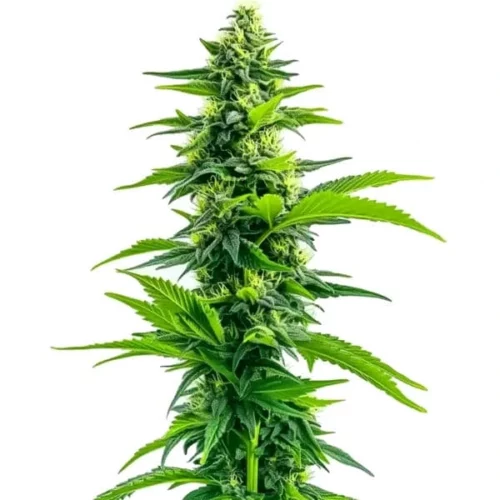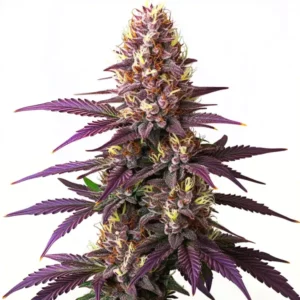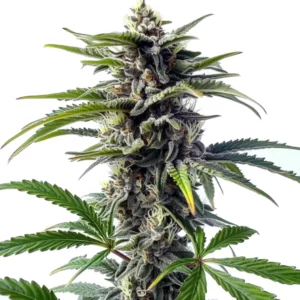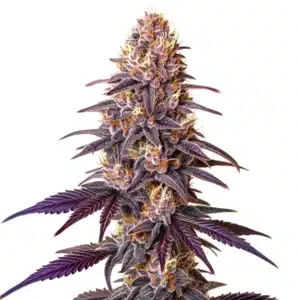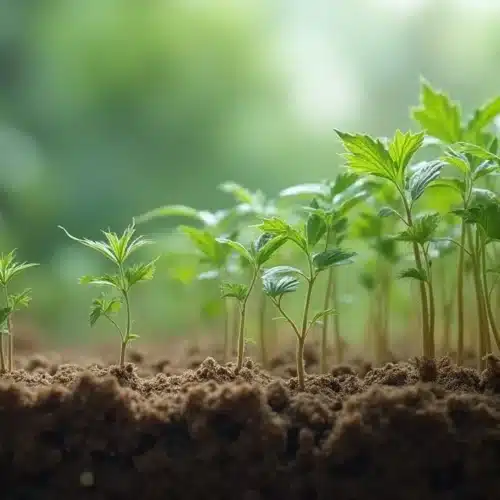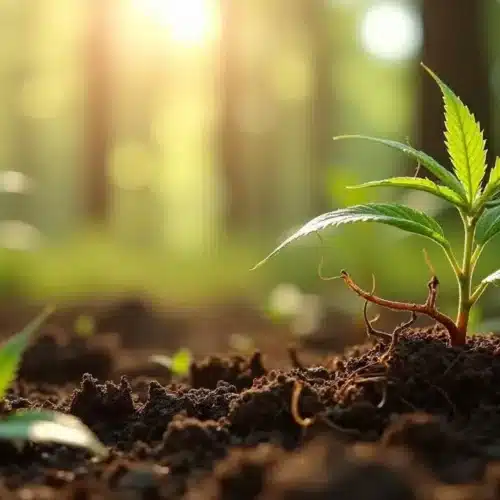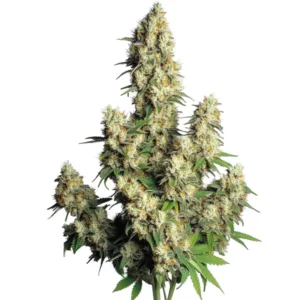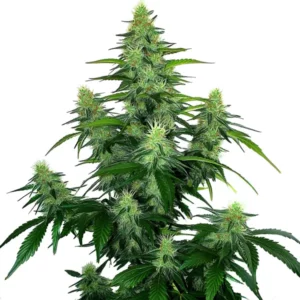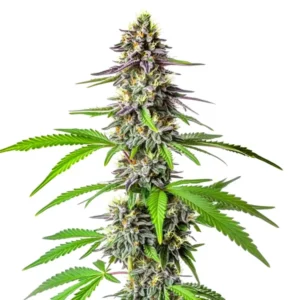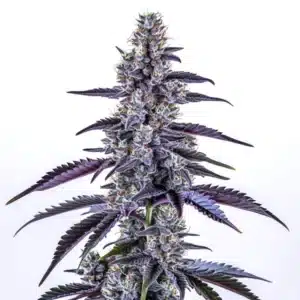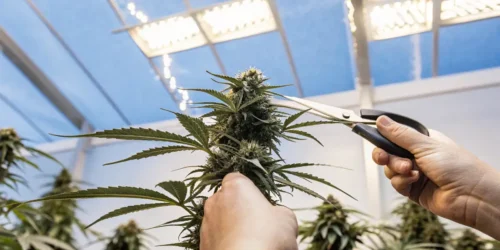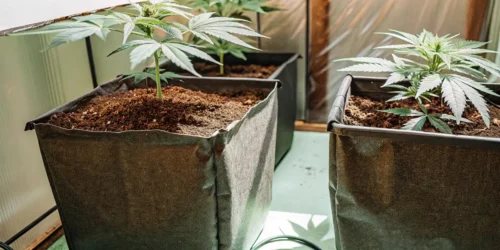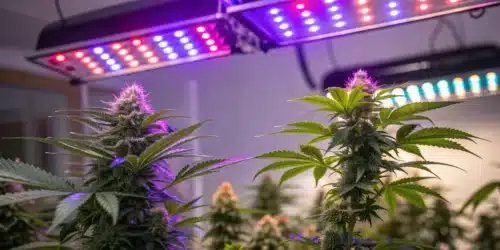Autoflowering cannabis plants have taken the cultivation world by storm, offering fast growth cycles and a non-reliance on light schedules. But the big question for many growers remains: should you top autoflowers? In other words, should you top autoflower plants to boost your harvest? This technique, often used to increase yields in photoperiod plants, has its own set of rules when it comes to autoflowers. Understanding the differences between an autoflower topped plant vs non topped is crucial for growers. In this comprehensive guide, we will dive into everything you need to know about topping autoflowers, including why you should consider it, how to do it correctly, and what you can expect from the process. Let’s get started!
Autoflowers and Topping
Topping is a high-stress training (HST) technique that involves cutting the main stem of a cannabis plant to promote the growth of multiple colas instead of one. An autoflower topped can yield impressive results when done correctly. This can potentially increase your yield by creating a bushier plant with more bud sites. However, autoflowers, with their short vegetative period, require a different approach compared to photoperiod plants.
Recommended Strains
Acapulco Gold
 THC: 15% - 19%
THC: 15% - 19% Type of seed: Feminized
Type of seed: Feminized Phenotype: Mostly Sativa
Phenotype: Mostly Sativa Day to flower: 10 - 12 weeks
Day to flower: 10 - 12 weeks
Acapulco Gold Autoflower
 THC: 20% - 24%
THC: 20% - 24% Type of seed: Autoflowering
Type of seed: Autoflowering Phenotype: Mostly Sativa
Phenotype: Mostly Sativa Day to flower: 8 - 10 weeks
Day to flower: 8 - 10 weeks
What Makes Autoflowers Different?
Autoflowering strains are derived from Cannabis ruderalis, a variety of cannabis that naturally flowers based on age rather than light cycles. This makes them particularly appealing for novice growers or those with limited time. However, their rapid life cycle means that any stress applied to the plant must be carefully managed to avoid stunting its growth.
Why Consider Topping Autoflowers?
The primary reason to top autoflowers is to maximize light distribution and promote a more even canopy. This can potentially lead to larger yields. By topping, you encourage the plant to grow more main colas, which can result in more buds. However, it’s essential to know when to top autoflowers to ensure optimal growth. However, timing and technique are crucial to ensure the plant has enough time to recover and still produce a bountiful harvest.
Promos & Deals
How to Top Autoflowers: Your Autoflower Topping Guide
When it comes to topping autoflowers, precision and timing are everything. Follow these steps to successfully top your autoflowering cannabis plants and boost your harvest.
Select Plants with Three to Four nodes
Before you even think about topping, your autoflower should have at least three to four nodes. This indicates that the plant is mature enough to handle the stress of topping. Here’s how to identify the right time:
- Monitor Plant Growth: Keep a close eye on your plants from the moment they sprout. Count the nodes these are the points where branches extend from the main stem.
- Check Plant Health: Ensure your plant is healthy, with no signs of nutrient deficiencies or pest issues. A healthy plant will recover faster from topping.
Top Your Autoflower
Once your plant has reached the appropriate stage, it’s time to top it. Follow these steps carefully:
- Prepare Your Tools: Use sterilized scissors or a sharp blade to avoid introducing any pathogens to your plant.
- Make the Cut: Identify the main stem and make a clean cut just above the third or fourth node. This will remove the apical dominance, encouraging the plant to focus energy on the lower branches.
Monitor Recovery
After topping, your plant will need time to recover. Here’s how to ensure a smooth recovery:
- Provide Optimal Conditions: Ensure your plant has adequate light, water, and nutrients. This will support its recovery and continued growth.
- Monitor Growth: Keep an eye on your plant for signs of new growth. Healthy recovery typically involves the sprouting of new branches from the nodes just below the cut.
Benefits and Drawbacks of Topping Autoflowers
The Benefits
- Increased Yield: By promoting more colas, topping can potentially increase the overall yield of your autoflowering plant.
- Better Light Distribution: A bushier plant allows light to penetrate more evenly, promoting better growth throughout the plant.
- Improved Airflow: Topping can lead to a more open plant structure, which improves airflow and reduces the risk of mold and pests.
The Drawbacks
- Risk of Stunting: If done incorrectly or too late, topping can stunt the growth of your autoflower, reducing its overall yield.
- Stress on the Plant: Topping is a high-stress training technique. Autoflowers, with their short lifecycle, need to recover quickly to make it worthwhile.
- Not Suitable for All Strains: Some autoflowering strains may not respond well to topping. Research your specific strain to ensure it’s a good candidate.
Alternatives to Topping Autoflowers
If topping seems too risky or you’re looking for alternative methods, there are other ways to train your autoflowering plants to achieve better yields.
Low-Stress Training (LST)
Low-stress training involves gently bending and tying down branches to promote horizontal growth. This method reduces stress on the plant and can be very effective for autoflowers.
- Start Early: Begin LST when the plant is young and flexible. This minimizes the risk of breaking branches.
- Tie Down Branches: Use soft ties to bend branches away from the center of the plant. Secure them in place to maintain the shape.
- Adjust Regularly: As the plant grows, continue to adjust the ties to maintain even growth.
Super Cropping
Super cropping involves pinching and bending branches to create minor stress points. This technique can increase yield by strengthening the branches and promoting more bud sites.
- Identify Branches: Choose branches that are flexible and easy to reach.
- Pinch and Bend: Gently pinch the branch until you feel the inner core give way, then bend it at a 90-degree angle.
- Support Growth: Provide support if necessary to help the plant recover and continue growing.
ScrOG (Screen of Green)
ScrOG involves using a screen to train plants to grow horizontally, maximizing light exposure and increasing yields.
- Install a Screen: Place a screen about 20 inches above your plants.
- Train the Branches: As the plants grow, weave the branches through the screen to promote horizontal growth.
- Maintain the Canopy: Continue to train the branches to maintain an even canopy and maximize light distribution.
Common Mistakes to Avoid When Topping Autoflowers
Topping Too Late
Timing is crucial when topping autoflowers. Topping too late in the plant’s life cycle can stunt its growth and reduce yields. Aim to top your plants early, around the third to fourth node, to allow enough time for recovery.
Using Dirty Tools
Always use sterilized tools to make cuts on your plants. Dirty tools can introduce pathogens, leading to infections that can severely damage your plants.
Neglecting Plant Health
Only top healthy plants that are free from nutrient deficiencies, pests, and diseases. A healthy plant will recover more quickly from the stress of topping.
Improper Cutting Technique
Make clean cuts just above the node to avoid damaging the plant. Jagged cuts can lead to infections and slower recovery times.
Not Monitoring Recovery
After topping, closely monitor your plant’s recovery. Ensure it’s getting the right amount of light, water, and nutrients to support new growth.

Advanced Tips for Topping Autoflowers
Use a Combination of Techniques
Consider combining topping with other training techniques like LST or ScrOG to maximize your yield. This can create a more robust plant with multiple large colas.
Keep a Grow Journal
Document your topping process, including the timing, method, and results. This can help you refine your technique and achieve better results in future grows.
Experiment with Different Strains
Not all autoflowering strains respond the same way to topping. Experiment with different strains to find those that perform best with this technique.
Adjust Nutrient Levels
Topping can increase the plant’s demand for nutrients. Adjust your feeding schedule to provide extra support during the recovery phase.
Use Plant Supports
After topping, your plant may need additional support to manage the weight of new growth. Use stakes or plant ties to keep branches upright and healthy.
Troubleshooting Common Issues
Slow Recovery
If your plant is recovering slowly after topping, check your growing conditions. Ensure it’s getting adequate light, water, and nutrients. Consider using a mild nutrient boost to support recovery.
Stunted Growth
If your plant appears stunted after topping, it may have been topped too late or stressed too much. Focus on providing optimal care to help it recover, and avoid further stress.
Infection at the Cut Site
If you notice signs of infection at the cut site, such as discoloration or mold, remove the infected area and sterilize your tools. Ensure your plant is in a clean environment with good airflow.
Uneven Canopy
If your canopy is uneven after topping, use LST or ScrOG techniques to train the branches and promote even growth. This will help ensure all parts of the plant receive adequate light.
Poor Bud Development
If your buds are developing poorly after topping, check your nutrient levels and light intensity. Ensure your plant is getting everything it needs to thrive.
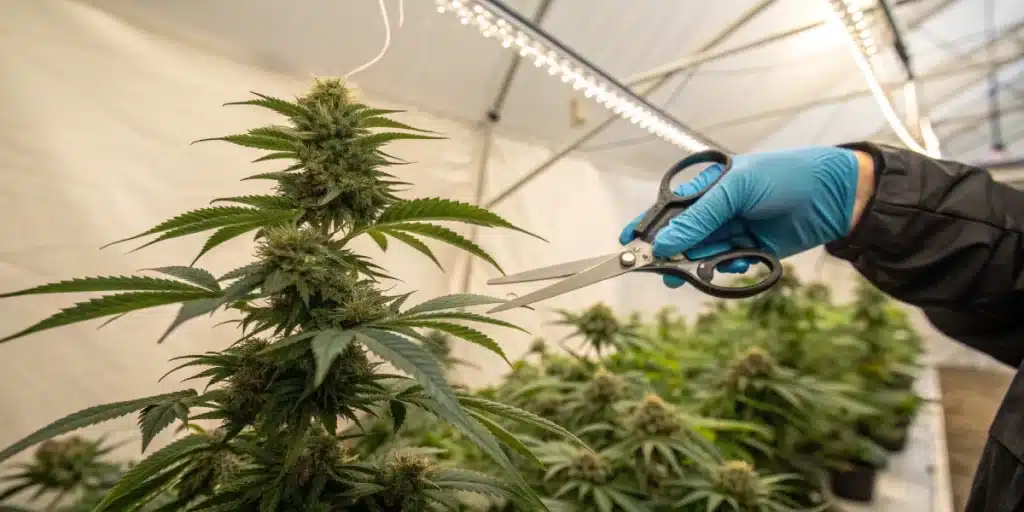
Weighing the Pros and Cons
The decision to top autoflowers ultimately depends on your specific growing conditions and goals. So when it comes to topping autoflowers, yes or no, it all depends on timing, technique, and strain. Here’s a quick rundown of the pros and cons to help you decide:
Pros
- Increased Yield Potential: Topping can lead to more bud sites and potentially higher yields.
- Better Light Distribution: Promotes an even canopy for more efficient light use.
- Improved Airflow: Can reduce the risk of mold and pests.
Cons
- Risk of Stunting: Incorrect timing or technique can stunt growth and reduce yields.
- Stress on the Plant: Autoflowers have a short lifecycle, so recovery time is limited.
- Not Suitable for All Strains: Some strains may not respond well to topping.
By carefully considering these factors and following the techniques outlined in this guide, you can successfully top your autoflowers and enjoy a bountiful harvest. Remember, practice makes perfect, and keeping detailed notes will help you refine your approach over time. Happy growing!
FAQs about Topping Autoflowers
What is topping in cannabis cultivation?
Topping is a high-stress training (HST) technique that involves cutting the main stem of a cannabis plant to encourage the growth of multiple colas instead of one. This can potentially increase yield by creating a bushier plant with more bud sites.
Can you top autoflowers?
Yes, you can top autoflowers, but it requires careful timing and technique due to their short vegetative period. Topping should be done early in the plant’s life cycle, typically when it has three to four nodes.
When is the best time to top autoflowers?
The best time to top autoflowers is when the plant has developed three to four nodes. This usually occurs in the early stages of vegetative growth. Topping too late can stunt the plant and reduce yields.
What tools do I need to top my autoflowers?
You will need sterilized scissors or a sharp blade to make a clean cut on the main stem. It’s crucial to use clean tools to avoid introducing pathogens that can harm the plant.
What are the benefits of topping autoflowers?
Topping can lead to increased yield potential, better light distribution, and improved airflow. By promoting multiple colas, topping helps create a more even canopy, which can result in more buds and healthier plants.
What are the risks of topping autoflowers?
The main risks include stunting the plant’s growth if done incorrectly or too late, and the added stress on the plant. Autoflowers have a short lifecycle, so they need time to recover from the topping stress.
Are all autoflowering strains suitable for topping?
Not all autoflowering strains respond well to topping. Some strains may be more sensitive to high-stress training techniques. It’s essential to research your specific strain to ensure it’s a good candidate for topping.
What are some alternatives to topping autoflowers?
Alternatives include Low-Stress Training (LST), super cropping, and the Screen of Green (ScrOG) method. These techniques can also help increase yield and promote even growth without the high stress associated with topping.
How do I care for my autoflower after topping?
After topping, ensure your plant has optimal conditions for recovery, including adequate light, water, and nutrients. Monitor the plant closely for signs of new growth and adjust your care routine as needed to support its recovery.
Can topping autoflowers really increase yields?
Yes, when done correctly, topping can increase yields by promoting the growth of multiple colas, leading to more bud sites. However, the technique must be applied early and carefully to avoid stunting the plant’s growth.

